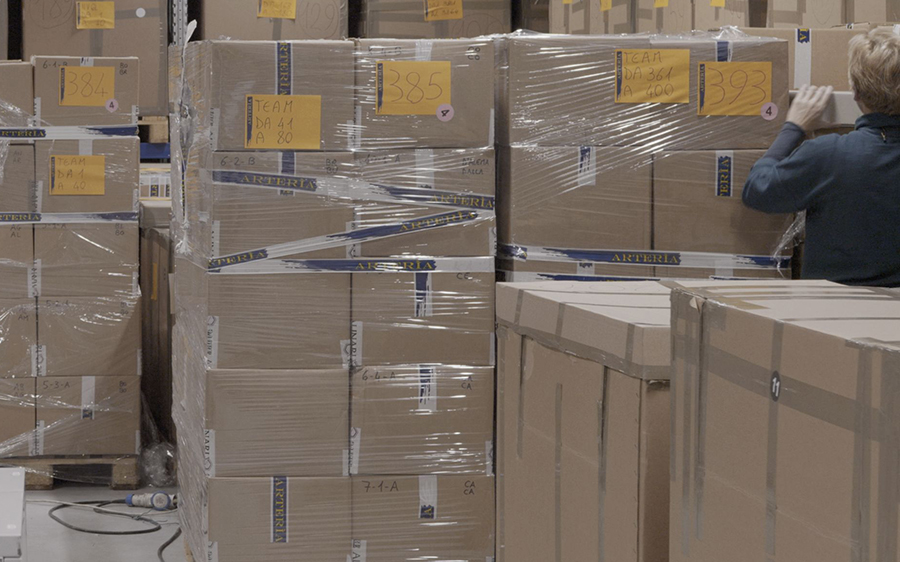Bringing Down the 'Archive Fever'
The most recent issue of Život umjetnosti (111) brings together a collection of articles presented at the international conference Bringing down the “Archive Fever”, held in October 2021 and organized by the Institute of Art History. The occasion gathered twenty-five experts whose artistic and scientific research is devoted to the topic of photographic archives, understood not exclusively as a place for collecting, processing and storing photographic materials. It is primarily about a conceptual shift in the understanding of the term, but also the way in which we treat such material – and which is often accompanied by a number of documents (but also their permanent loss), in order to use them for further contextualization and interpretation.
In the past two decades, since the topic of photographic archives has been in the increased focus of researchers, numerous archives have been discovered; some of them are in private hands, and some in various institutions around the world. Interest in how to use this material has reached its peak in recent years, while photographic archives became an indispensable part of exhibition and museum displays. They are material commented within the educational context, which exposes the actions of individual institutions and bears witness to historical situations and the changes that followed.
Derrida's words from an essay “Archive Fever”, published in 1995 and based on his lecture of the same name, held a year earlier at the Freud Museum in London, are still inspiring. Researchers and artists have recognized that original impulse that continues to vibrate, following on his words with new knowledge. And some of them are presented in this volume of Život umjetnosti, published also as one of the results of the project The Cycle: European Training in Photographic Legacy Management (2020 – 2022), which was carried out in cooperation with five partner institutions from France, Spain and Croatia, financed by the European Union within the Creative Europe program (sub-program Culture). The leading partner of the project was Spéos (FR), together with the Institute of Art History, the Office of Photography (HR), Magnum (FR) and Deusto (ES).
This volume, with introductory remarks by Ana Isabel Cruz Yábar, who was a member of the Magnum Photos agency in Paris at the time of the project, begins with a text by Costanza Caraffa from the Institute for the History of Art in Florence, the Max-Planck Institute, examining the vast and significant photographic documentation collected in this institution not only through historical discourse and the standard treatment of photography as “secondary” material. Through a discussion about the value of photography as an object, she also introduces contemporary artists who approach the material in an innovative way. Ivana Gržina from Strossmajer’s Gallery also devoted her research focus to the topic of institutional photography, especially from the perspective of photography as an “auxiliary material” of the curator. Several articles are devoted to archival research in the Central and Eastern Europe, countries whose political history, among other things, is burdened by the negation of national characteristics and continuous but hidden resistance to the Soviet regime. By opening such archives, almost unknown historical moments of the so-called “small histories” are revealed, which Katarzyna Ruchman-Stockmans writes about, focusing on archives as a strategy of community activities. By introducing a digital turn, Judit Gellér considers private family albums and the innovative ways in which contemporary artists influence the way photographic archival materials are handled to become accessible. Kamila Kłudkiewicz writes about an almost forgotten archive that often changed management policies due to changes in that part of Europe. Magdalena Anna Nowak processed the oeuvre of the Polish pioneer of electronic and laser art and kinetic sculpture, Stanisław Ostoja-Kotkowski, who achieved most of his artistic career in distant Australia, while Miha Colner presents a synthesis of the work of the Slovenian photographer Miroslav Zdovac, whose archive was recently completed at the Kostanjevica Gallery, while further interpretation is still due. Kateryna Filyuk writes about the Ukrainian photographer Iryna Pap, one of many authors whom we have known very little about until now, and whose work was “drowned” in the narrative of Soviet photography. Viktoriia Myronenko introduces the private photographic archive of the Soviet-Ukrainian videographer Leonid Burlaka, whose structure points to complex geopolitical relations and the perseverance of individuals to preserve knowledge of their own artistic activity for future generations. Derrick R. Cartwright writes about Esther Born, a photographer who worked in the USA and Mexico between the two world wars, and whose photographic interpretation of architecture is complemented by new knowledge derived precisely from the research of her photographic archive.
The journal is available as open access via Hrčak: https://hrcak.srce.hr/broj/23647
The journal is financially supported by the Ministry of Culture and Media of the Republic of Croatia, the Ministry of Science and Education of the Republic of Croatia, and the City of Zagreb. The issue 111 was financially supported by the European Comission's Creative Europe programme.
-
Contact: Ivana Mance
